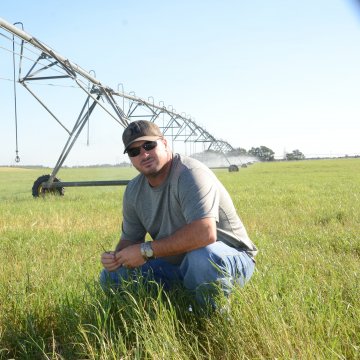Explore our blog featuring articles about farming and irrigation tips and tricks!
Irrigating Beef Yields

By: Tharran Gaines
With annual rainfall averaging around 25 inches on his farm in western Oklahoma, Dustin Donley certainly knows the value of center pivots. Consequently, he’s already installed 17 pivots on the 5,000 acres he manages just south of Mooreland.
However, while one might expect the pivots to be pumping water onto corn, soybeans, or even wheat, Donley looks at things a bit differently. Although he grows nearly 2,500 acres of wheat annually, the majority of it is dryland cropped, while more than 2,000 acres of Bermuda grass are irrigated. That’s because Donley says he can make more profit from beef on irrigated grass than he can on irrigated wheat.
“I’m about 99% wheat and cattle,” Donley relates, noting that he typically runs about 800 head of Angus-cross cows. “I sometimes have a little bit of milo that I use in rotation with wheat, as well as some corn that I cut for silage. But 14 of the 17 pivots I own are planted to Bermuda, with 10 of those primarily harvested for hay only, while four are for grazing.”
Two of the remaining three pivots are typically planted to corn, milo, or wheat, depending on the need for silage, winter forage, or a rotation crop. However, this year they’re planted to a 27-seed blend of cover crops that will be returned to wheat in the fall. In the meantime, those, too, are being grazed, since the blend contains a number of different legumes.
Stay up to date on all T-L news and get alerts on special pricing!


